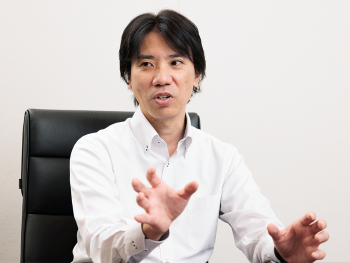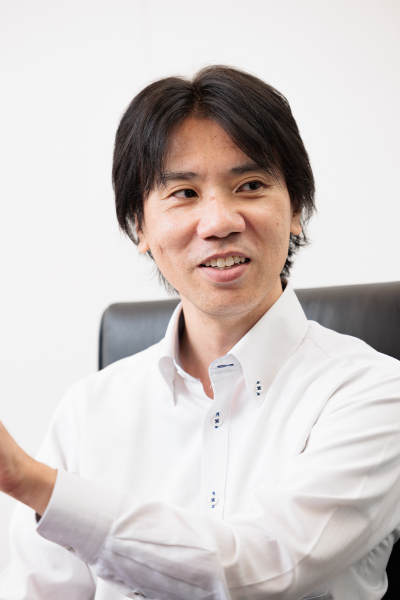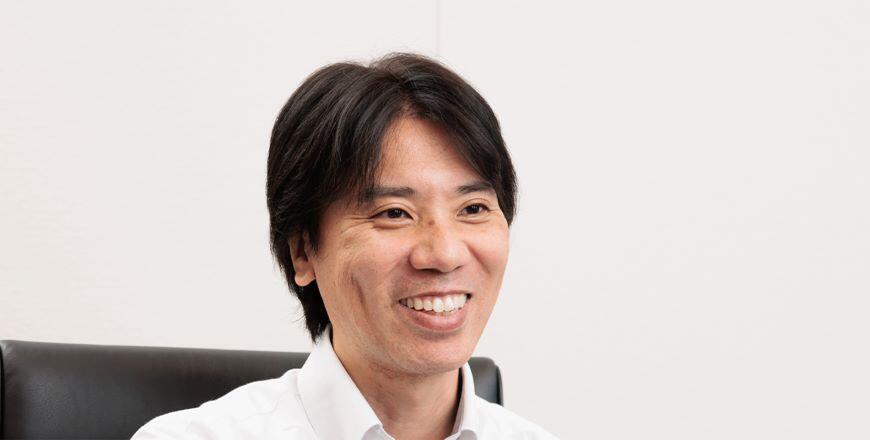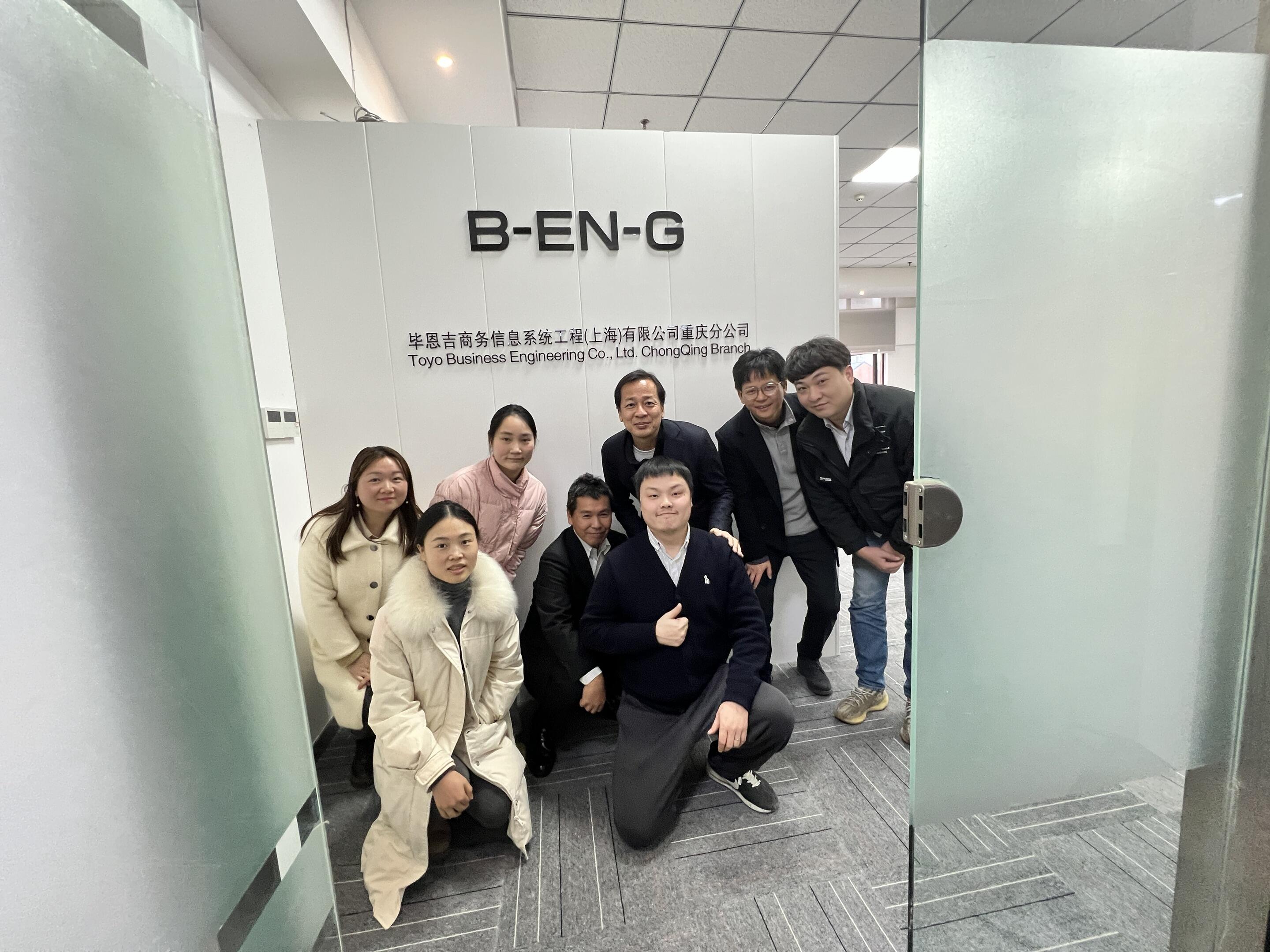Speaker: Business Engineering Corporation
Solution Business Headquarters
Digital Business Headquarters Data Management Department
Deputy Director
Taku Matsushita

For companies to promote DX (digital transformation) and data-driven management, the first thing they need to tackle is MDM (master data management). By integrating master data that is scattered across various departments and systems and has different code systems and quality, and centralizing operations, it is possible to eliminate cumbersome manual work from many tasks, improve efficiency, and enable cross-departmental data analysis and utilization, thereby creating new value. However, it is not as simple as that. First, what is the problem you want to solve, what effect do you want to achieve by doing so, and what are you aiming for beyond that? It is necessary to understand the different backgrounds and challenges of each company and derive the optimal solution. Taku Matsushita is a leading expert in MDM and supports the efforts of many companies.
Returning to work with the aim of becoming a data professional
B-EN-G employs many consultants and engineers, not just new graduates, but also mid-career hires. One of them, Taku Matsushita, has a unique career history. Matsushita studied production management, quality control, ergonomics, statistics, and other subjects at the Department of Management Engineering at university, and joined B-EN-G as a new graduate in 2002. In 2008, he moved to a ward office in Tokyo. After serving as a project manager on a core system renewal project, he returned to B-EN-G in 2015.
"By working on information systems from the user's perspective, I realized once again how great a contribution B-EN-G is making to the world and the significance of our work. At that time, a former boss with whom I continued to have personal contact asked me if I would like to come back since a new department had been established." (Matsushita)
The new department was the predecessor of the current Data Management Division. At the time, people were beginning to say that "data is a natural resource that creates new value in the 21st century," and he decided to return to work at B-EN-G, hoping to become a professional in data utilization, something he had been very interested in since his university days.
The essence of MDM is not the introduction of tools
"Different problem-solving solutions for each company"

Matsushita joined the Data Management Department two years after it was established, and to this day his role has been to support the introduction and implementation of MDM to a wide range of companies across a wide range of industries, including pharmaceuticals, medical devices, printing, logistics, and retail.
"Many companies are now actively working to realize digital transformation and data-driven management, and MDM is the first step to becoming the foundation for corporate transformation," says Matsushita.
Introducing MDM is not easy. There is no optimal solution for MDM that applies to all companies, and the way it works varies from company to company. It is not uncommon for there to be no clear goal for introducing MDM in the first place.
"All companies start from the same point. They begin considering MDM, believing that they can improve various internal operations by integrating and managing master data that is scattered in various places. However, once the project gets underway, doubts arise: 'Operations have been running smoothly up until now, so what can we accomplish by spending so much time and money to consolidate master data and unify the codes, and what is the point of it?'" (Matsushita)
This is because MDM is viewed only from the perspective of system construction, with the goal of integrating master data becoming the main objective.
"MDM is by no means just about introducing a tool. Therefore, when a customer consults B-EN-G, we discuss in detail what issues they want to solve with MDM, what effects they want to derive from it, and what their ultimate goals are. We begin the project only after thoroughly discussing and clearly determining the direction. This is the way B-EN-G supports the introduction and practice of MDM." (Matsushita)
A completely different approach
"Two MDM Case Studies"
What kind of MDM implementation and practice has Panasonic supported so far?
The first example is the effort to introduce and implement MDM at a testing institution.
This testing organization is divided into multiple departments, each of which performs various tests requested by its customers. Each department also manages master data.
We therefore investigated the current state of master data management and how it was being used, and found that there were variations in coding systems and data quality between departments. For example, cumbersome manual work was required to tally up sales for customers who had outsourced testing across multiple departments, and that the master data registration work performed by each department was also costly.
After much discussion between the company and B-EN-G, it was decided that the first step would be to solve the issue of disparate data management for each department by introducing MDM. Based on this, Panasonic proposed the following solution:
"We built a company-wide MDM system to unify master data registration and data distribution to each department's existing systems. This will centralize master data operations at a center and eliminate variations in data quality, reducing the workload and costs in each department. What's more, this MDM system is now also evolving into a platform for unifying the management of various parameter information that automates inspection lines." (Panasonic)
Matsushita also introduced a case study of MDM implementation and practice in the manufacturing industry. This company managed master data for each group company and system, which resulted in a large amount of duplicate data and a large variation in quality between them. This was a bottleneck that prevented data analysis and utilization across the group.
What is noteworthy about Panasonic's approach to this issue is that it proposed a solution that was completely different from that of the testing agency mentioned above.
"If this customer were to introduce a distributed (centralized) group-wide MDM system, it would have incurred enormous costs and the construction work was expected to take a long time, making the return on investment poor. Therefore, for this case, we adopted a method of collecting data from the existing systems of each group company, which were the source of the master data, into the MDM as it was generated, cleansing and merging the data, and creating a golden record. In this way, we built a master hub that manages the relationship between each company's code and the group's unified code, as well as the latest attribute information, and achieved comprehensive cross-sectional analysis of data for all groups in a short period of time while minimizing the impact on operations for each group company." (Panasonic)
What to pay attention to when implementing and implementing MDM

However, even Panasonic did not reach its current level overnight. When he first joined the Data Management Department, understanding of the importance of data value was not as widespread as it is today, so there were few cases where customers properly understood the value and role of MDM and the difficulties of implementation. It was always a trial and error situation. "To be honest, there were many approaches that relied on tools, and I spent my days pondering how to proceed with projects," recalls Panasonic.
This tool-centric approach works well as long as you agree with the user owner or leader, but if that person moves to another department, the project will lose momentum. You may have to start over from scratch, choosing the right tool, based on the new owner or leader's thinking.
The company is considering a system for managing master data that can be used for a long time, due to the bitter experience of having the project's policy changed drastically. As they have built up a track record through many projects, Matsushita says, "When introducing and implementing MDM, we have learned first-hand the importance of first formulating clear goals together with the customer and sharing the steps to realizing them in the future with all parties involved."
Matsushita also said that his past experience working in the systems department of a local government "has honed my ability to integrate and match data from the user's (residents') perspective and link it to a variety of services, which has indirectly helped me in my current activities."
Based on his own experience, Panasonic points out the key points to keep in mind when introducing and implementing MDM:
"The objectives for introducing and practicing MDM vary widely from company to company, and even if the backgrounds are similar on a broad level, the approaches will be different. The scope of data management and functional configuration will differ depending on what you want to achieve by managing master data in an integrated manner and what the biggest problem you want to solve is, and ultimately the operation of the master data itself will also change. In addition, because there are an extremely wide variety of business systems related to MDM, it is often the case that schedules have to be changed midway through a project. For this reason, it is necessary to carry out the project while always being aware of plans for the new introduction or renewal of peripheral business systems." (Matsushita)
Now, as Deputy Director of the Data Management Department, he is committed to leading the entire department and developing its members and improving the capabilities of the organization.
"Immediately after joining B-EN-G as a new graduate, I was involved in the development of mcframe and supporting the implementation of SAP systems, so I think I can understand not only customer service and project management, but also the feelings of engineers well. I would like to keep in mind the perspective of the young members who follow me and follow the growth of each individual," says Matsushita, who is determined to further increase the value of B-EN-G in the world of MDM and data utilization.








